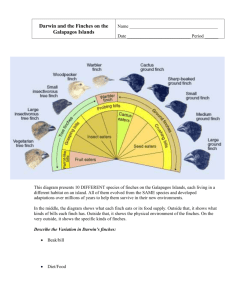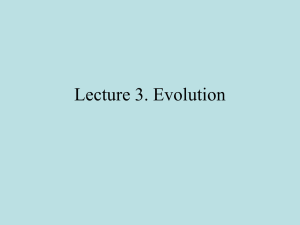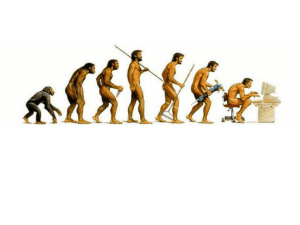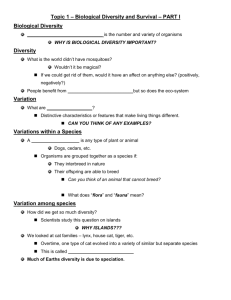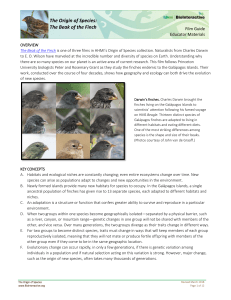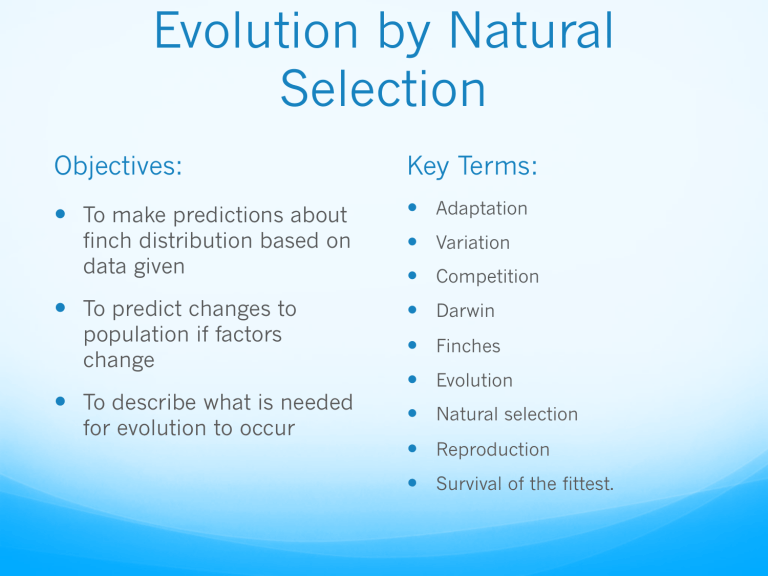
Evolution by Natural Selection Objectives: Key Terms: To make predictions about Adaptation finch distribution based on data given To predict changes to population if factors change To describe what is needed for evolution to occur Variation Competition Darwin Finches Evolution Natural selection Reproduction Survival of the fittest. Variation Goldfinch Bullfinch How do these of Finch vary? Whytwo dospecies they vary? Adaptations Goldfinch Bullfinch How are these species of Finch adapted? Charles Darwin Modern ideas of evolution started with Charles Darwin. In 1831 Darwin set out as a ship’s naturalist on HMS Beagle, it was a 5 year voyage to South America and the South Sea Islands. Voyage of the Beagle Darwin recorded observations of plants and animals that he saw on the voyage. In the Galapagos islands Darwin observed that each of the islands had similar types of finches, iguanas and tortoises, but that each was different to make the most of local conditions. Task To use the information about the finches and the food available on each island to predict which finches will live on which islands. You are to work in groups of 2/3. If you are finding the task challenging there is a second information sheet to help you. Time: 10 minutes Expectation: Everyone to complete first 3 finches. Finch Distribution What if . . . The seeds on Espanola started to increase in size? 1. What would you expect to happen immediately to the population of Small Ground Finches? 2. What would you expect to see happen to the population over the next 20 years? 3. What would happen if the size of the seeds decreased again in the future? Darwin’s Theory Darwin only observed one type of finch on the mainland- similar to the Galapagos Small Ground Finch. He proposed that all finches evolved from the one species that lived on the mainland. What factors would have to exist for a species to be able to change? Genetic variation due to mutation. Competition; for food, mates, territory, to avoid predation. ‘Survival of the fittest’ the organism that is best adapted to its environment will survive. Reproduction- passing on the advantageous alleles to the offspring. Leading to change in the species over timeevolution. Exam question (5 marks) Two different species of butterfly: Amauris Hypolimnas Both species can be eaten by most birds. Amauris has a foul taste which birds do not like, so birds have learned not to prey on it. Hypolimnas does not have a foul taste but most birds do not prey on it. Describe, in terms of natural selection, how Hypolimnas may have developed its wing markings Mark Scheme: Mutation caused changes in marks in Hypolimnas. Competition; less predation of butterflies with these markings. These butterflies survived to reproduce; other butterflies were eaten. Advantageous allele/gene was passed on to offspring. Over time population of Hypolimnas start to look more like Amauris; evolution Remember: make your answer specific to example given.

